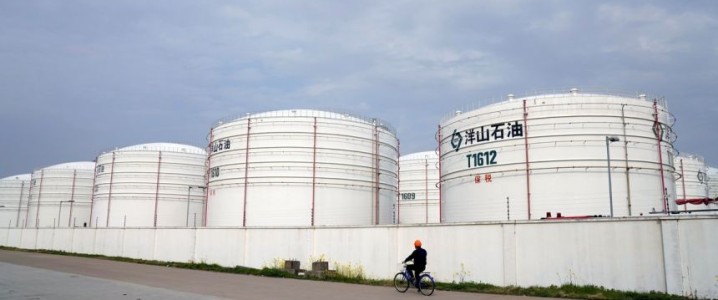In a bold escalation of its foreign policy, the United States is intensifying sanctions against Iran, with a particular focus on disrupting financial channels that support the regime’s oil exports. This move primarily targets China, Iran’s largest oil buyer and de facto key financier, as part of a broader strategy to curtail Tehran’s funding for its nuclear program and military activities. Drawing from recent developments, this article explores the implications for global energy markets and extends the analysis to potential parallel actions against India, should President Trump follow through on threatened sanctions related to its oil imports from Russia.
Are you from California or New York and need a tax break?
U.S. Strategy to Cripple Iran’s Oil Revenue
The U.S. aims to reduce Iran’s oil exports to near zero by targeting the financial networks that enable these transactions. Iran has long relied on oil sales to fund its Islamic Revolutionary Guard Corps (IRGC) and other destabilizing activities in the Middle East. Despite existing sanctions, Iran’s exports have persisted, largely thanks to China’s willingness to import significant volumes while bypassing international restrictions.
China’s role is pivotal: in 2019, official data showed imports of around 926,119 barrels per day (bpd) in July alone, with actual figures likely higher due to unreported shipments. From June 1 to July 21, 2020, at least 8.1 million barrels (158,823 bpd) were imported, often disguised or routed through opaque channels.
Beijing has utilized institutions like the Bank of Kunlun to facilitate these deals, maintaining operational independence from U.S.-influenced financial systems. Recent U.S. actions include sanctioning 20 Chinese entities involved in trading Iranian oil and petrochemicals, such as Zhoushan Jinrun Petroleum Transfer Co.
U.S. officials have been vocal about this crackdown. A senior legal source stated, “We want to put Beijing back in its box when it comes to Iran and the Middle East, as part of neutering the threat from China and its allies more broadly.”
Congressman August Pfluger described the Iranian regime as “the world’s most dangerous state sponsors of terrorism,” while Under Secretary of the Treasury Brian E. Nelson emphasized the commitment to “exposing elements of the Iranian military and its complicit partners abroad.”
The State Department highlighted how these revenues fuel conflict and oppression.
The outlook suggests further measures, with the source noting, “More is to come.”
This could strain U.S.-China relations, potentially leading to higher oil prices if Iranian supply is significantly disrupted. Global energy markets may face volatility, as reduced Iranian exports (estimated at over 1 million bpd to China alone) could tighten supply amid ongoing geopolitical tensions.
Extending the Lens: Potential Sanctions on India and Their Severity
While the Iran-China dynamic centers on sanctioned Iranian oil, a parallel scenario is unfolding with India and its imports from Russia. President Trump has repeatedly threatened tariffs and penalties on India for continuing to buy Russian crude, accusing it of indirectly financing Russia’s war in Ukraine.
If Trump follows through, the impacts could be profound for India’s economy, energy security, and the broader oil market.India’s reliance on Russian oil has grown dramatically since 2022, now accounting for nearly a third of its total imports in 2025.
Unlike Iranian or Venezuelan oil, Russian crude isn’t under direct U.S. sanctions, but purchases often occur below the G7 price cap, drawing U.S. ire.
Trump has proposed a 25% tariff on Indian goods imported to the U.S., plus unspecified “penalties” for these oil deals, with implementation potentially starting as early as August 1, 2025.
Indian officials have remained defiant, asserting that they will maintain these imports to ensure affordable energy supplies.
A top Trump aide, Stephen Miller, claimed India is “funding this war by purchasing the oil from Russia.”
China has echoed similar sentiments, defending its own purchases from Russia and Iran as matters of energy sovereignty.
How Bad Could It Get?
If these sanctions materialize, the fallout could be severe across multiple dimensions:
Economic Impact on India: A 25% tariff on exports to the U.S.—India’s largest trading partner—could cost billions, affecting sectors like textiles, pharmaceuticals, and IT services.
Additional penalties might force refineries to seek costlier alternatives, raising domestic fuel prices and inflation. India’s energy security could be compromised, as Russian oil provides a discounted hedge against volatility.
Global Oil Market Disruptions: Diverting Indian demand away from Russia might flood markets with unsold Russian crude, initially depressing prices. However, retaliatory measures or supply chain shifts could lead to shortages elsewhere, pushing Brent crude higher. Recent threats have already caused oil to fall amid uncertainty.
If extended to Iran-like financial sanctions, it could mirror the China scenario, amplifying geopolitical risks.
Geopolitical Ramifications: This could strain U.S.-India ties, pushing New Delhi closer to Russia and China.
Broader trade wars might emerge, with India accusing the U.S. and EU of double standards.
For energy stakeholders, heightened tensions could deter investments in alternative supplies, prolonging reliance on sanctioned sources.
In summary, the U.S.’s push against Iran via China sets a precedent that could extend to India-Russia ties, with potentially cascading effects on energy affordability and stability. As Trump signals “substantial” actions, the world watches for ripples in oil flows and diplomatic relations.
Is Oil & Gas Right for Your Portfolio?
Crude Oil, LNG, Jet Fuel price quote
ENB Top News
ENB
Energy Dashboard
ENB Podcast
ENB Substack

